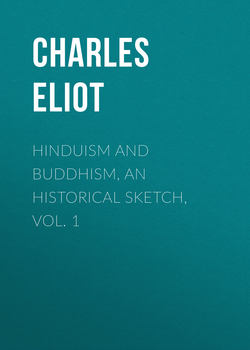Читать книгу Hinduism and Buddhism, An Historical Sketch, Vol. 1 - Charles Eliot - Страница 9
BOOK I
INTRODUCTION
9. European Influence and Modern Hinduism
ОглавлениеThe small effect of European religion on Hinduism is remarkable. Islam, though aggressively hostile, yet fused with it in some sects, for instance the Sikhs, but such fusions of Indian religion and Christianity as have been noted29 are microscopic curiosities. European free thought and Deism have not fared better, for the Brahmo Samaj which was founded under their inspiration has only 5504 adherents30. In social life there has been some change: caste restrictions, though not abolished, are evaded by ingenious subterfuges and there is a growing feeling against child-marriage. Yet were the laws against sati and human sacrifice repealed, there are many districts in which such practices would not be forbidden by popular sentiment.
It is easy to explain the insensibility of Hinduism to European contact: even Islam had little effect on its stubborn vitality, though Islam brought with it settlers and resident rulers, ready to make converts by force. But the British have shown perfect toleration and are merely sojourners in the land who spend their youth and age elsewhere. European exclusiveness and Indian ideas about caste alike made it natural to regard them as an isolated class charged with the business of Government but divorced from the intellectual and religious life of other classes. Previous experience of Moslims and other invaders disposed the Brahmans to accept foreigners as rulers without admitting that their creeds and customs were in the least worthy of imitation. European methods of organization and advertisement have not however been disdained.
The last half century has witnessed a remarkable revival of Hinduism. In the previous decades the most conspicuous force in India, although numerically weak, was the already mentioned Brahmo Samaj, founded by Ram Mohun Roy in 1828. But it was colourless and wanting in constructive power. Educated opinion, at least in Bengal, seemed to be tending towards agnosticism and social revolution. This tendency was checked by a conservative and nationalist movement, which in all its varied phases gave support to Indian religion and was intolerant of European ideas. It had a political side but there was nothing disloyal in its main idea, namely, that in the intellectual and religious sphere, where Indian life is most intense, Indian ideas must not decay. No one who has known India during the last thirty years can have failed to notice how many new temples have been built and how many old ones repaired. Almost all the principal sects have founded associations to protect and extend their interests by such means as financial and administrative organization, the publication of periodicals and other literature, annual conferences, lectures and the foundation of religious houses or quasi-monastic orders. Several societies have been founded not restricted to any particular sect but with the avowed object of defending and promoting strict Hinduism. Among such the most important are, first the Bharat Dharma Mahamandala, under the distinguished presidency of the Maharaja of Darbhanga: secondly the movement started by Ramakrishna and Swami Vivekananda and adorned by the beautiful life and writings of Sister Nivedita (Miss Noble) and thirdly the Theosophical Society under the leadership of Mrs Besant. It is remarkable that Europeans, both men and women, have played a considerable part in this revival. All these organizations are influential: the two latter have done great service in defending and encouraging Hinduism, but I am less sure of their success in mingling Eastern and Western ideas or in popularizing Hinduism among Europeans.
Somewhat different, but described by the Census of 1911 as "the greatest religious movement in India of the past half century" is the Arya Samaj, founded in 1875 by Swami Dayanand. Whereas the movements mentioned above support Sanâtana Dharma or Orthodox Hinduism in all its shapes, the Arya Samaj aims at reform. Its original programme was a revival of the ancient Vedic religion but it has since been perceptibly modified and tends towards conciliating contemporary orthodoxy, for it now prohibits the slaughter of cattle, accords a partial recognition to caste, affirms its belief in karma and apparently approves a form of the Yoga philosophy. Though it is not yet accepted as a form of orthodox Hinduism, it seems probable that concessions on both sides will produce this result before long. It numbers at present only about a quarter of a million but is said to be rapidly increasing, especially in the United Provinces and Panjab, and to be remarkable for the completeness and efficiency of its organization. It maintains missionary colleges, orphanages and schools. Affiliated to it is a society for the purification (shuddhi) of Mohammedans, Christians and outcasts, that is for turning them into Hindus and giving them some kind of caste. It would appear that those who undergo this purification do not always become members of the Ṡamaj but are merged in the ordinary Hindu community where they are accepted without opposition if also without enthusiasm.
29
The Kadianis and Chet Ramis in the N.W. Provinces are mentioned but even here the fusion seems to be chiefly between Islam and Christianity. See also the article Râdhâ Soârai in E.R.E.
30
According to the Census of 1911.
